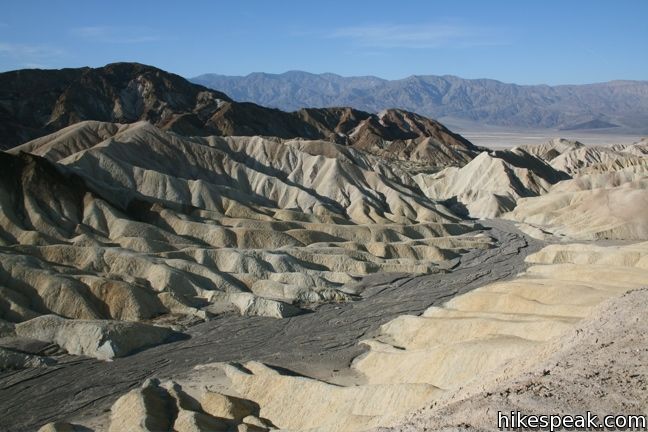On a trip to Death Valley, I hiked to Zabriskie Point for a panoramic view inside the park. From there I noticed that nearly all of the ground is a smooth mass with individual rocks being nearly non-existent. The most prominent feature is large alluvial fans. At higher elevations nearby, the ground is darker brown while lower down, the ground shows lighter tan and yellow color. I would consider the shape of the fans to determine if the lower yellow ground previously covered the darker browns. Another possibility is that the darker reds are due to oxidation. Determining the mineral types of the different colored soil would be beneficial in figuring out their history. From the shape of the fans tells me what direction the mineral came from, giving me an idea of what existed "upstream" of Zabriskie Point.
 |
| Looking west from Zabriskie point shows how sediment flowed to its current position (Smigelski, 2009). |
The erosion that created the fans is appears to be from rare rainfalls in which the rain water moved quickly over land, transporting soil with it. The structures might be fairly young geologically speaking and the erosion recent, so searching the area for outcroppings that appear to be older could help determine what the newer alluvium is covering. This may not be possible in the immediate area as it looks like recently moved sediment in every direction!
| The flow of sediment created a crazy landscape around Zabiskie Point (Todd, 2011). |
Photo References:
Smigelski, S. (2009, November). Zabriskie Point in Death Valley National Park. Hikespeak. https://www.hikespeak.com/attractions/zabriskie-point-in-death-valley/
Todd, C. (2011, May 13). Zabriskie Point in Death Valley. Earth Science Picture of the Day. https://epod.usra.edu/blog/2011/05/zabriskie-point-in-death-valley.html
No comments:
Post a Comment